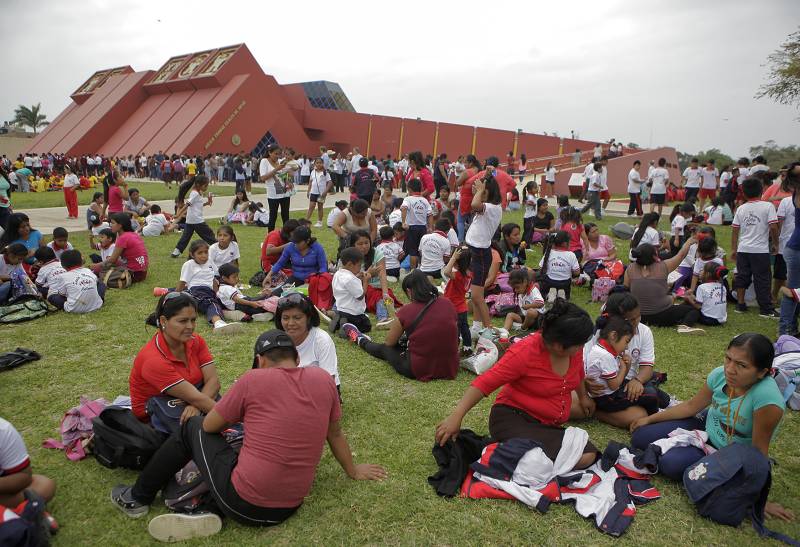Experts look to solve Andean virus resistance puzzle

Stay tuned with 24 News HD Android App

Latin America has become the epicenter of the global coronavirus pandemic but one group seems to be resisting its effects better than the rest: people in the Andes.
As the longest continental mountain range in the world, the Andes span 7,000 kilometers (4,300 miles) from Venezuela and Colombia down to Chilean and Argentine Patagonia in the south.
The mountains rise to an average height of 4,000 meters with the highest peak -- Argentina's Mount Aconcagua -- sitting at almost 7,000 meters.
But in Peru, the country with the second most reported infections in Latin America after Brazil, just 10 percent of cases have been found in areas above 3,000 meters, such as the former capital of the Inca empire, Cusco.
"We've recorded cases in cities like Cusco, Huaraz, Cajamarca, Cerro de Pasco, Abancay, Huancavelica, and indeed there are fewer cases," Augusto Tarazona, head of the public health commission at Peru's Medical College, told AFP.
"In those cities in elevated areas there are minimal cases and almost zero mortality. That has caught our attention."
The same can be said of neighboring Bolivia where infections have mostly been concentrated in low-lying eastern areas such as the tropical Santa Cruz and Amazonian Beni departments that border Brazil.
"The infection rate is substantially lower in Bolivia in the high-altitude regions, like La Paz, compared to what has been recorded in low-lying areas like Santa Cruz," Virgilio Prieto, the Ministry of Health's head of epidemiology, told AFP.
Official data from both countries drives home the point.
In Peru's jungle Loreto department, there have been almost 8,000 infections and 321 deaths, while the Cusco region, which has a 50 percent larger population, has seen just 1,500 cases and 13 deaths.
The death rate in Loreto is four percent, compared to 0.87 percent in Cusco.
In Bolivia, Santa Cruz has had 13,000 cases while La Paz, which has almost the same population, has had fewer than 1,400.
- Lack of oxygen -
Life isn't always easy in the high Andes, where the great Inca civilization emerged out of agricultural communities that raised lamas and alpacas.
For the moment there's no scientific explanation for the Andean people's seemingly stronger immunity to the coronavirus, but some experts claim the key is the respiratory systems of those living in an environment with less oxygen.
"Theories are being developed about these aspects and deep studies are just beginning," Tarazona said.
People who are oxygen-starved may have a lower number of angiotensin-converting enzymes (ACE), which act as doors of entry for the virus, Peruvian infectious disease specialist Eduardo Gotuzzo told AFP.
So in people living in less oxygen-rich environment, the virus may have "fewer entry points and can produce fewer infections."
Tarazona said experts postulate that people in the high Andes might have different ACE receptors due to their permanent lack of oxygen.
"That means they have a breathing system adapted to less oxygen, and that in some way influences the pathophysiology of the virus inside the human body," he said.
"The body adapts so it doesn't keep hold of the virus."
- Ultraviolet theory -
Some studies suggest that ultraviolet rays could act as a natural sterilizer at high altitude.
"Ultraviolet radiation is definitely increased at high altitude and that means the virus survives less or there's less virus in exposed areas," pulmonologist Carlos Iberico, from Lima's Sabogal Hospital, told AFP.
Not everyone is convinced. Prieto, from the Ministry of Health, fears that presumptions about the supposed benefit of ultraviolet rays will only help spread the virus.
"It's created a false sense of security in the population," he warned.
